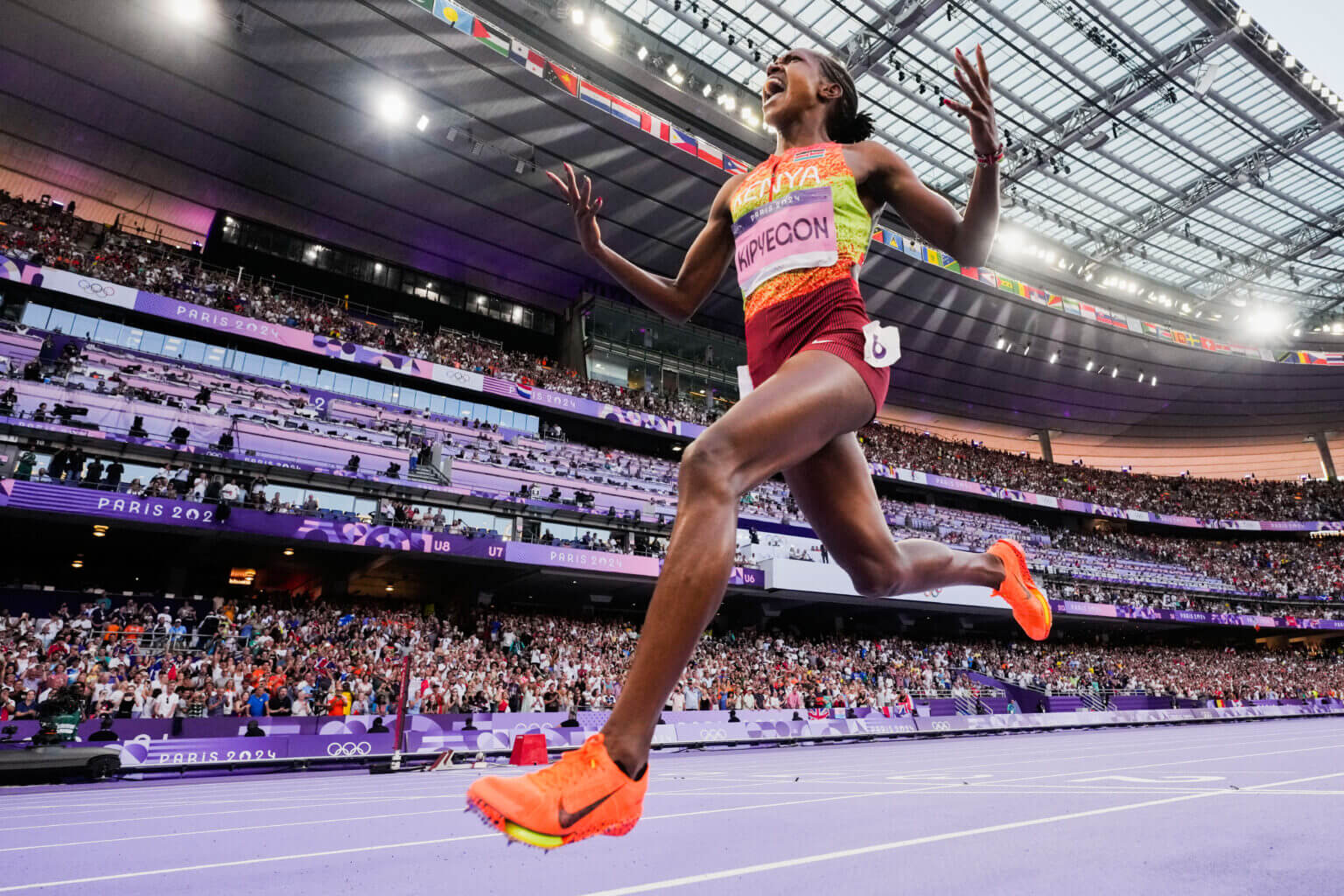From Barefoot Beginnings to Historic Goals: Faith Kipyegon’s Quest for the Sub-Four-Minute Mile
Growing up running barefoot across the rugged terrains of Kenya, Faith Kipyegon’s journey from humble origins to becoming a world record holder exemplifies resilience and unwavering belief in a brighter future. Her story is rooted in the conviction that extraordinary achievements are always within reach. This week, she aims to challenge that conviction by attempting to shatter the elusive four-minute barrier in the mile-a feat that has long symbolized human athletic potential.
The Challenge Ahead: Breaking the Four-Minute Barrier
At 31 years old, Kipyegon faces the formidable task of trimming nearly eight seconds from her personal best of 4:07.64. Her attempt is scheduled for Thursday during a three-day event at the Nike-sponsored Breaking4 race in Paris. While the goal is ambitious, she will be supported by cutting-edge sports technology, strategic race tactics such as drafting behind pacers, and a comprehensive public relations campaign designed to inspire and motivate.
Historical Context and Scientific Insights
Similar to Eliud Kipchoge’s groundbreaking sub-two-hour marathon in 2019, Kipyegon’s effort is unlikely to be officially recognized as a world record by World Athletics, primarily because the event isn’t officially sanctioned and involves the use of pacemakers. Nonetheless, the significance of her attempt extends beyond record books. Researchers and sports scientists are keenly analyzing her technique, aiming to understand the long-term implications for athletic performance and training methodologies.
The Power of Drafting in Middle-Distance Running
Recent scientific studies, including a notable paper published by the Royal Society Open Science, highlight drafting as a critical factor in achieving faster times. Drafting involves running in formation behind or ahead of other athletes to reduce air resistance, thereby conserving energy. For instance, simulations suggest that with optimal drafting-using one pacer ahead and another behind-Kipyegon could potentially run a mile in approximately 3:59.37, a mere fraction above the historic four-minute mark.
Professor Rodger Kram from the University of Colorado explains that the runner in front effectively pushes air molecules out of the way, creating a slipstream that the following athlete can exploit. This technique, combined with precise pacing, can significantly enhance performance, especially in short-distance record attempts.
Unique Challenges for Female Athletes
However, drafting presents unique challenges for Kipyegon. Her exceptional speed and talent mean there are few female runners capable of acting as effective pacers. According to Kram, her natural talent is both a blessing and a hurdle, as it limits the pool of suitable pacers. Additionally, race strategy plays a vital role; maintaining a close proximity to the track’s inner rail can shave precious meters off her total distance, further aiding her quest.
Technological Innovations Supporting the Attempt
In her bid for history, Kipyegon will don Nike’s latest technological advancements, dubbed a “moonshot” project. She will wear specialized super spikes-the Victory Elite FK-along with a custom 3D-printed sports bra made from thermoplastic polyurethane. Complementing her gear is an aerodynamic “fly suit,” complete with arm and leg sleeves, a headband, and “aeronodes” designed to minimize drag. Nike’s dedicated team of scientists and designers have integrated sports science insights to craft equipment aimed at pushing the boundaries of human speed.
Implications for Future Athletes and Race Strategies
The innovations and strategies employed in this attempt could revolutionize training and racing for athletes at all levels. Drafting, in particular, is becoming increasingly accessible, with even amateur runners able to benefit from optimized formation techniques. As Edson Soares da Silva, a researcher involved in the study, notes, adopting effective drafting strategies can significantly improve performance across various race distances.
Beyond the Attempt: The Road to Breaking Barriers
Even if Kipyegon falls just short of the four-minute mile-say, finishing in 4:02-it would still mark a monumental step forward, signaling that the barrier is within reach for future generations. Kram emphasizes that Faith is currently the prime candidate to break this barrier, especially as women’s middle-distance running continues to evolve. The progress of female athletes like Jane Hedengren, who recently clocked a high school mile in 4:23.50, exemplifies the rapid advancement in women’s endurance and speed.
The Evolution of Women’s Middle-Distance Running
Shalaya Kipp, a former Olympian and exercise physiologist, points out that women’s sports are still developing the depth of talent seen historically in men’s athletics during Bannister’s era. The current landscape features standout athletes like Kipyegon, but broader participation and competitive depth are essential for consistently breaking barriers. Her attempt is a crucial step in inspiring more women to pursue elite performance levels.
Building on Past Milestones
Kipyegon’s effort echoes the pioneering spirit of Kipchoge’s sub-two-hour marathon. Although his initial attempt in 2017 was not officially recognized, his subsequent achievement of 1:59:40 in 2019 demonstrated the potential of combining scientific training, innovative gear, and strategic pacing. Her shorter-distance challenge is rooted in similar principles, with research from the University of Colorado providing a blueprint for success through detailed analysis of drafting and pacing techniques.
The Future of Record-Breaking in Athletics
As science and technology continue to advance, the pace of record-breaking performances is expected to accelerate. Improvements in sports nutrition, recovery methods, and equipment are making faster times increasingly attainable. Kipyegon’s attempt symbolizes this ongoing evolution-an inspiring reminder that human limits are continually being redefined.
Personal Motivation and the Spirit of Competition
For Kipyegon, the pursuit of breaking the four-minute mile is more than a race; it’s a testament to her belief in the power of dreams and perseverance. She emphasizes the importance of self-confidence and the conviction that women can achieve what men have historically accomplished. Her words reflect a broader message of empowerment: “Dream big, believe in yourself, and keep pushing forward. Every step I take is a step toward the next milestone in my career.”

